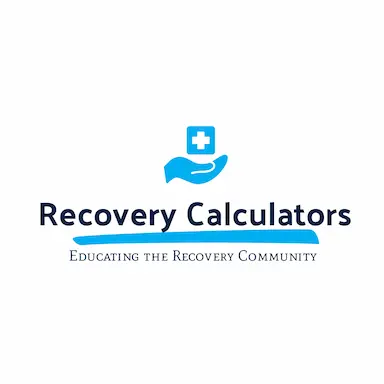Alcohol withdrawal can be a serious and life-threatening condition, especially for individuals with alcohol use disorder or chronic alcoholism. Severe withdrawal symptoms, such as delirium tremens and seizures, require medical treatment to prevent complications.
While doses of benzodiazepines are commonly used for managing alcohol withdrawal, phenobarbital has gained attention as an effective alternative. This article explores how phenobarbital for alcohol withdrawal works, its dosing protocols, potential side effects, and how it compares to other treatments.
Questions answered in this article:
Our Alcohol Treatment Centers

Scottsdale Rehab
Luxury Personalized Rehab

HART Rehab
Holistic Luxury Personalized Rehab

Scottsdale Detox
Luxury Medical Detox
Understanding Alcohol Withdrawal
When a person with prolonged alcohol abuse suddenly stops drinking, the central nervous system (CNS) becomes overactive, leading to withdrawal symptoms. These symptoms range from mild tremors and anxiety to severe seizures and delirium tremens.
Factors that increase the severity of alcohol withdrawal include:
- Long-term alcohol dependence
- High alcohol consumption
- Previous withdrawal episodes
- Co-occurring conditions such as liver disease
Severe cases require hospitalization and medications like phenobarbital to prevent complications.
What is Phenobarbital?
Phenobarbital is a barbiturate medication used to treat and prevent seizures, manage anxiety, and sometimes help with withdrawal symptoms from other drugs like benzodiazepines.
Common uses of phenobarbital include:
- Epilepsy & Seizure Control – Used as an anticonvulsant for various types of seizures.
- Sedation & Anxiety – Occasionally prescribed to help with severe anxiety or as a sleep aid, though not commonly due to its high potential for dependence.
- Alcohol & Drug Withdrawal – Helps manage withdrawal symptoms from alcohol or benzodiazepine dependence.
- Neonatal Jaundice – Sometimes used in newborns to lower bilirubin levels.
How Do Barbiturates Work?
Barbiturates, including phenobarbital, work by enhancing gamma-aminobutyric acid (GABA), a neurotransmitter that inhibits overactivity in the brain. This reduces excitability in the CNS, helping to control withdrawal symptoms, and also contributes to its sedative effects.
Side Effects of Phenobarbital
While effective, phenobarbital comes with risks. Common side effects include:
- Drowsiness or sedation
- Dizziness
- Headache
- Nausea and vomiting
- Depression
Meanwhile, serious side effects include respiratory depression and allergic reactions. In some cases, it can also cause suicidal thoughts or actions in some people.
How is Phenobarbital Used in Alcohol Withdrawal?
Phenobarbital is used in medical settings for alcohol withdrawal management, particularly in cases where other treatments have failed. It is typically administered in an inpatient setting where healthcare professionals can closely monitor patients.
Methods of Administration:
- Intravenous (IV) or Oral Dosing: IV is preferred for rapid symptom control, while oral dosing is used for ongoing management.
- Loading Dose Strategy: A high initial dose followed by tapering doses ensures symptom control and prevents complications.
- Symptom-triggered Therapy: Dosage adjustments based on withdrawal severity, often guided by Clinical Institute Withdrawal Assessment (CIWA) scores.
Phenobarbital is particularly useful for patients who have an increased risk of severe withdrawal, including those with previous delirium tremens episodes or resistance to doses of benzodiazepines.
Patients with a history of benzodiazepine abuse can also find benefit in using phenobarbital treatments, as well as in situations where medications with a long half-life are preferred.
Phenobarbital Dosing for Alcohol Withdrawal
Phenobarbital is increasingly used as an alternative to benzodiazepines for managing alcohol withdrawal due to its predictable pharmacodynamics and higher therapeutic index.
The dosing strategy varies based on severity of withdrawal and patient factors like liver function.
1. Loading Dose Protocol (Rapid Stabilization)
A common approach is to administer a loading dose of 10-15 mg/kg of phenobarbital intravenously over 30 minutes. This dose is based on the patient’s ideal body weight (IBW). For example, for a male patient with an IBW of 71 kg, the initial bolus would be approximately 710-1065 mg IV.
2. Symptom-Triggered Dosing
For persistent symptoms, additional doses of 130-260 mg IV can be given every 15-30 minutes as needed. The goal is to gradually increase the total body phenobarbital level to achieve therapeutic effects without excessive sedation.
This approach is used when monitoring with Clinical Institute Withdrawal Assessment for Alcohol (CIWA-Ar).
Maximum Cumulative Dose
A soft maximum of 20 mg/kg is often recommended, with careful re-evaluation of symptoms before exceeding this dose. A hard maximum of 30 mg/kg is generally considered the upper limit for the treatment of alcohol withdrawal.
Considerations For Use
- Pharmacokinetics: Phenobarbital has a long half-life of about 3-4 days, allowing for less frequent dosing compared to benzodiazepines.
- Monitoring: Serum levels are not typically monitored for alcohol withdrawal treatment, but clinical response is closely observed.
- Combination Therapy: Phenobarbital can be used as monotherapy or in combination with other medications like antipsychotics for managing residual symptoms.
Benefits of Using Phenobarbital for Alcohol Withdrawal
Phenobarbital offers several advantages over other medications for alcohol withdrawal:
- Effective Seizure Prevention: Phenobarbital is highly effective at reducing seizure risk, making it a suitable option for patients at high risk.
- Long Half-Life: Its prolonged action provides stable symptom control, reducing the need for frequent dosing.
- Alternative to Benzodiazepines: In cases where doses of benzodiazepines are ineffective or contraindicated, phenobarbital serves as a viable option.
- Structured Withdrawal Management: The loading dose approach ensures a controlled withdrawal process, minimizing the risk of severe symptoms.
- Lower Risk of Rebound Symptoms: Due to its prolonged action, patients experience fewer fluctuations in withdrawal severity.
Despite these benefits, phenobarbital must be administered cautiously due to its potential for overdose and long-term dependence risks.
Is Phenobarbital Addictive?
Phenobarbital, like other barbiturates, carries a risk of dependence and addiction. Long-term use can lead to tolerance, requiring higher doses to achieve the same effect, which increases the risk of overdose. Withdrawal from phenobarbital can be severe and may include symptoms such as anxiety, tremors, seizures, and even life-threatening complications.
Signs of Phenobarbital Dependence
- Needing escalating doses to achieve the same sedative effects
- Experiencing withdrawal symptoms when stopping use
- Difficulty controlling use despite negative consequences
Because of its addictive potential, phenobarbital should only be used under medical supervision and for short-term management of alcohol withdrawal.
Benzodiazepines vs. Barbiturates for Alcohol Withdrawal
Phenobarbital and benzodiazepines both act as central nervous system depressants, helping to control alcohol withdrawal symptoms. Here’s how they compare with each other:
Benzodiazepines
- Standard of Care: Benzodiazepines are the first-line treatment for alcohol withdrawal due to their rapid onset and long duration of action.
- Mechanism: They work by facilitating the action of GABA, a neurotransmitter that helps calm the nervous system.
- Advantages: Generally safer and have fewer side effects compared to barbiturates.
- Disadvantages: Some patients may not respond to benzodiazepines, and they can cause paradoxical agitation and delirium.
Barbiturates
- Alternative Treatment: Barbiturates, particularly phenobarbital, are used as an alternative when benzodiazepines are ineffective or unavailable.
- Mechanism: Barbiturates directly open GABA receptors and also affect the glutamate system, which can be beneficial in severe withdrawal cases.
- Advantages: Uniform efficacy, less likely to cause paradoxical reactions, and may be more effective in severe withdrawal.
- Disadvantages: Carry a higher risk of respiratory depression and are more prone to misuse compared to benzodiazepines.
Comparison and Use
- Effectiveness: Both are effective, but barbiturates may offer advantages in severe cases or when benzodiazepines fail.
- Safety: Benzodiazepines are generally safer, but barbiturates can be safe when used appropriately.
- Clinical Use: Barbiturates are often considered for benzodiazepine-resistant cases or during shortages.
Finding Help for Alcohol Addiction
Phenobarbital is an effective alternative for the treatment of alcohol withdrawal, particularly in severe cases. However, it carries serious side effects and increased risk of dependence, making careful monitoring essential.
Seeking professional treatment ensures safe withdrawal management and long-term recovery success. If you or a loved one is struggling with alcohol use disorder, help is always available. Reaching out is the first step towards a healthier and happier life.


